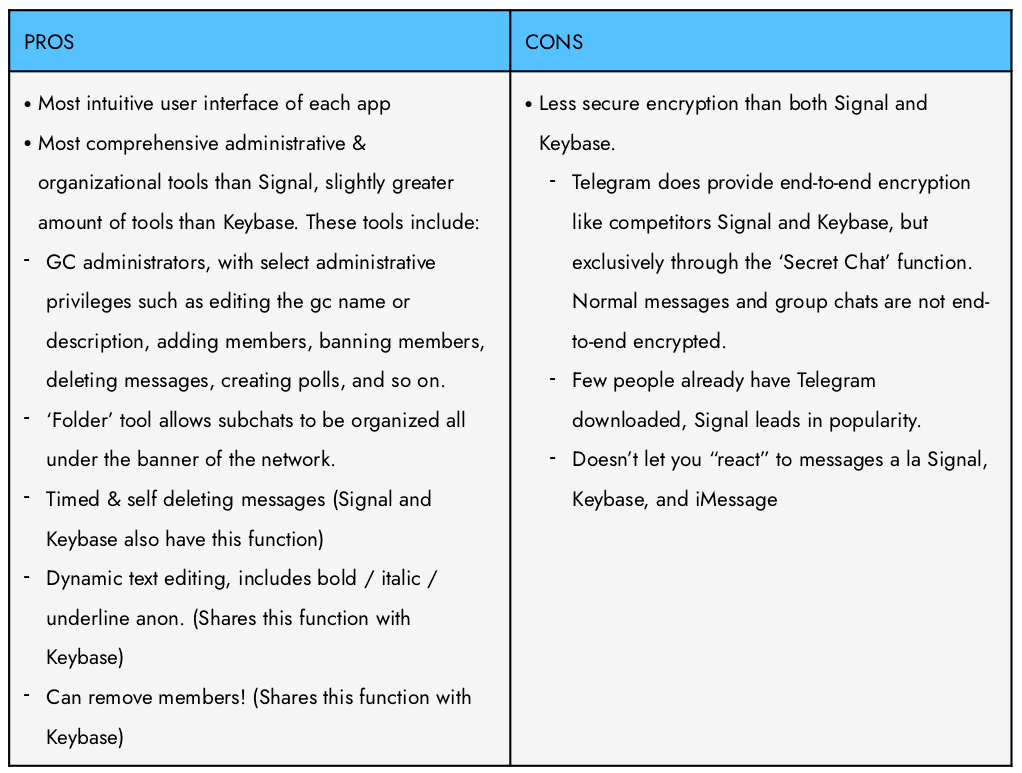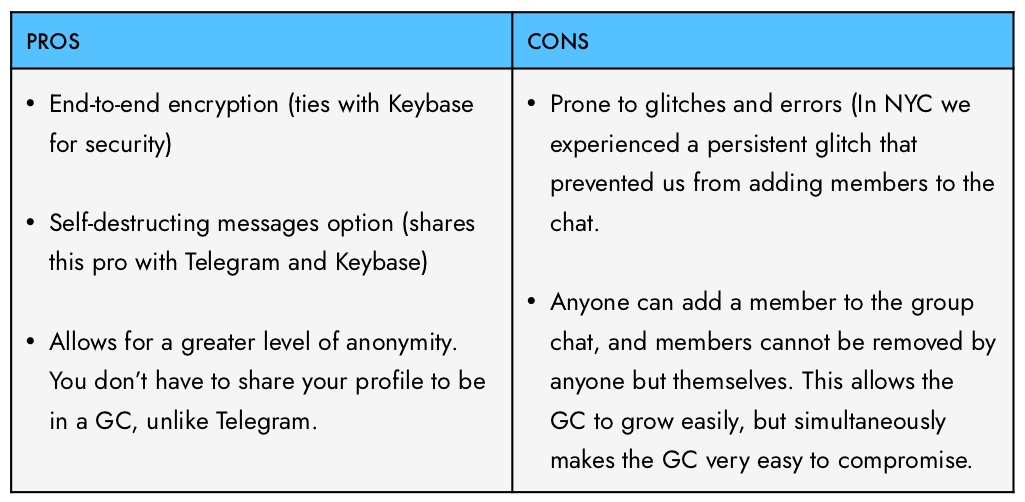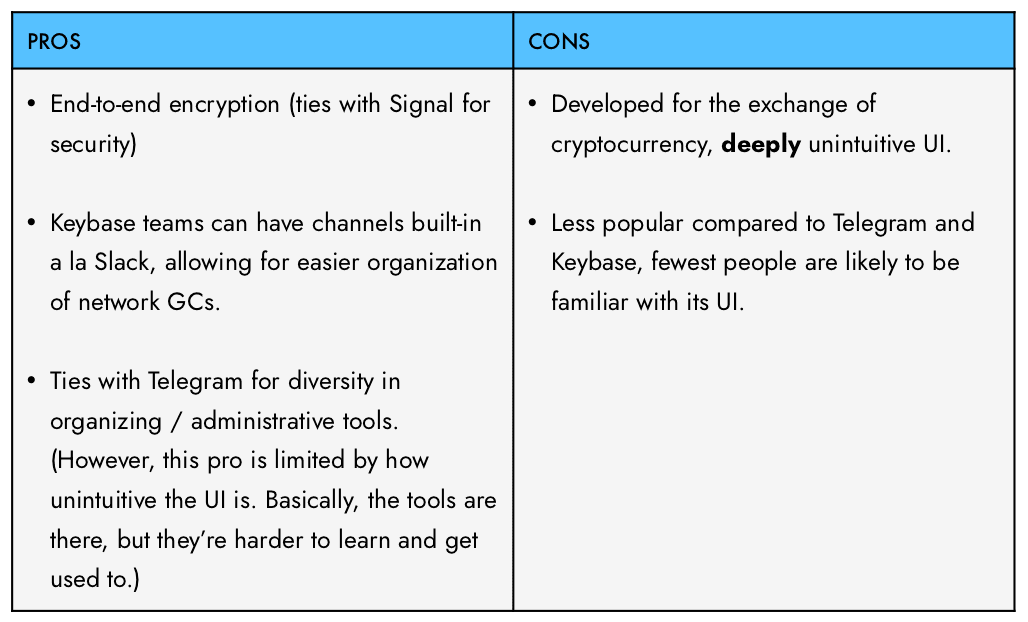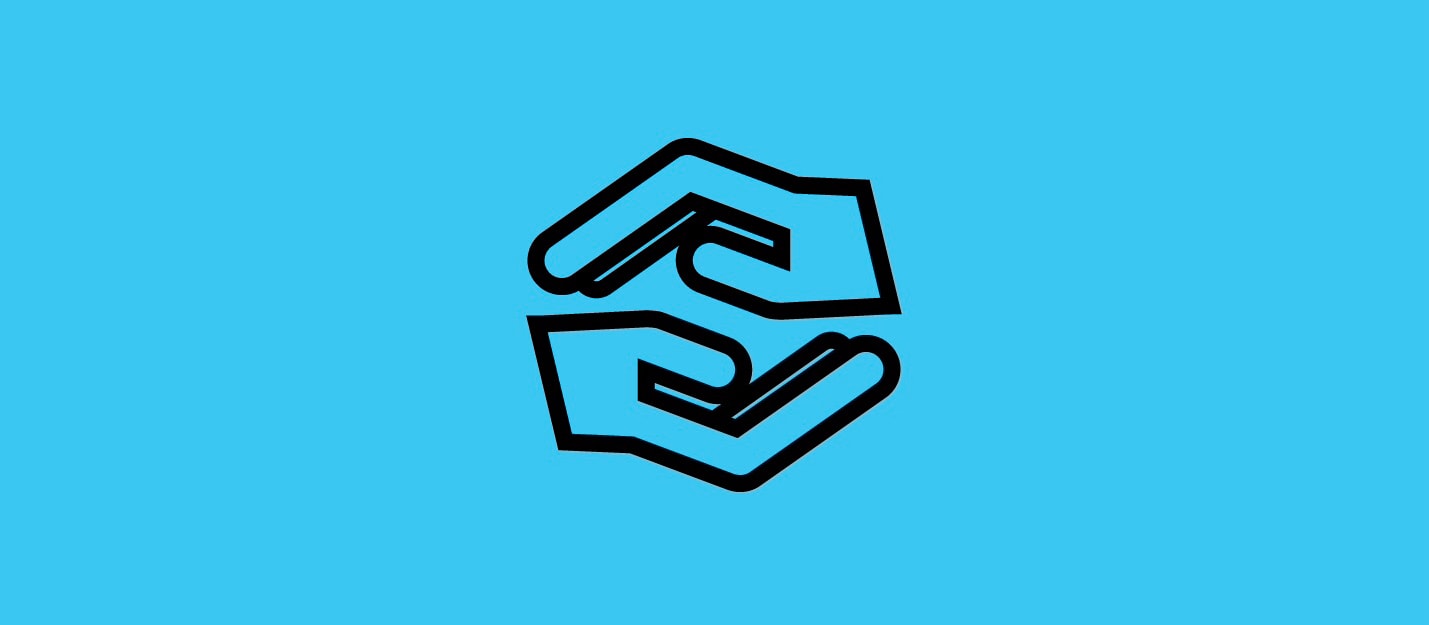ABOUT THIS TRAINING:
This training is a guide to making a youth support network for actions in your area and explains how to effectively mobilize an interconnected web of group chats, youth, and resources. This guide was created in collaboration with Zero Hour, Extinction Rebellion Youth, IIYC, and Future Coalition and was modified for NooWorld.
Note: Some communication platforms may have updated their features since the time of writing. We recommend doing your own research for what works best for your group in addition to this guide.
This training is a 19 minute read.
HOW DO I START?
So you’re trying to mobilize a youth support network in your area. Rad! The only resources you’ll need to follow the steps in this guide are your phone/laptop and a functioning internet connection.
- First, get clear on what you’re setting up and why. The highest priority and primary objective of your network should be connecting people who need resources (that is, demonstrators on the ground) with people who can get those resources to them. Those resources include, but are not limited to transport, temporary housing, money, water, masks, food, mental health, support, basic legal information, and educational resources. The network is a space for demonstrators to send their urgent requests, and for supporters to get that request met as best they can. This guides’ framework revolves around the main hub group chat with all the members of the network which fields requests and distributes information, with multiple exterior group chats to meet other needs.
- Select a secure communications platform. The three platforms discussed in this guide are Signal, Telegram, and Keybase. Each has its own pros and cons. Regardless of which one you pick, remember the security culture is key. Don’t volunteer sensitive information, don’t use your face for a profile picture if you don’t have to, etc.
- Establish the ‘foundation’ of your network. Reach out to communities you know and trust to be the first people you add to the network. Start with your close activist friends, then reach out to members of your local activism organizations or coalitions.
- Establish a vetting system and create some subgroups. Ask a few founding members to help out by vetting people who want to join. Create a set of appropriate questions to verify that people who want to join the network are legit. This can seem ‘extreme’, but it’s worth guarding against the risk of giving undercover police direct access to the information (name, number, location, addresses) of demonstrators or supporters. This is also a good time to get ahead of making exterior group chats so that you do not flood the main chat. We recommend starting out with the main hub, a protestor-specific chat, a police updates chat, and a chat exclusively for BIPOC.
- Make founding documents/messages. This is the organizational’ part of organizing a network. Once your group chat has its foundation and subgroups set up, you’ll need a welcome message to explain how to make effective use of the network. This is also a good time to make a RiseUpPad or EtherPad ‘Support Document’.
- Begin Growing Your Network! Start with a post on social media that states, at minimum, the following four points: 1) the location in which you’re organizing, 2) who should join, 3) the purpose of the network, and 4) who to contact to be added. If you or any of your companions have graphic design skills, this is a good time to put them to use. Contact organizers and coalitions in your area, let them know what you’re organizing, and ask them to spread the word!
From here, you should have the beginnings of a solid network! Steps moving forward are difficult to organize chronologically, so here are some general tips to move forward.
Tips for How To Move Forward:
- Collect all activists in one main chat: this will be the general hub for information and requests. It includes people that can both offer and need support. Make sure to remind people not to spam the chat — if people on the ground need something, the main chat should be a place for them to vocalize that need without it being buried.
- Create Sub-Chats to Meet New Needs: Depending on how many people you have in your network, you may want to create sub-chats. Sub-groups serve to facilitate the exchange of resources and non-urgent information that would otherwise flood the main hub and bury protesters' requests. Examples of subgroups (including sample descriptions):
- Protestors: General chat of anyone that is protesting to coordinate meet-ups at actions, updates, supplies coordination, etc. Note: you should additionally create action-specific chats as to not spam this chat and stay secure. Example: Brooklyn Museum 06/14
- Police Updates: Organizing shifts, updates about new groups & double checking police scanners [info is then sent to the protestors chat].
- BIPOC: Chat exclusive to Black, Indigenous, and P.O.C members of the network.
- Self-Education: A place to share online resources. Send any articles or books that you un-learn racism, governmental structures, prison, etc. as well as internet archives with helpful sources. Let's help each other revolutionize ourselves!
- Artists 4 BL: This is a group for any youth artist selling art to donate the proceeds to anti-racist/BLM organizations, share black art and helpful graphics, and ask any questions about any good artists, places to donate, etc.
- Jail Support: Place to coordinate jail support.
- Clean-Up: The clean-up group cleans up the parks in which protests have been happening. To clean up, we purchase trash bags, gloves, hand sanitizer, alcohol wipes, and brooms/dustpans. This is also a way to keep our cities clean and sanitized while still in a global pandemic.
- Establish Contacts for Sub-Chats & Yield ‘Control’ Whenever Possible: You should not be monitoring and facilitating the addition of members to every subgroup alone. Trust and rely on your network. For example, if people have experience monitoring police scanners, ask them if they’re comfortable teaching others how to do the same and fielding questions. Similarly, if people in your network have the bandwidth to organize unique support initiatives (coordinated fundraisers, clean-ups, etc), feel free to establish contacts to take responsibility for those projects.
- Broaden your Outreach. If you live in the United States, reach out to your local chapter of the National Lawyers Guild or American Civil Liberties Union and see if you can get a meeting discussing the typical charge that youth demonstrators can expect to see in your region. Reach out to youth organizations that organize for a variety of causes.
HOW DOES VETTING WORK?
Do not underestimate the value of keeping your network secure. We do that by using a secure platform and by establishing a vetting process. In New York City, we have a team of 5 people in a vetting chat that keeps track of everyone in the network in a PadRiseUp document. This poses some security risks in itself because there is a list of people within the network that could be compromised. However, documenting the web of members added allows us to ensure that in the event the network is compromised, we can easily identify through which contacts the chat became compromised. In order to join the chat, a person must message a vetting person and respond to these questions:
- What is your Instagram?
- How did you initially hear about this group?
- What is your prior organizing/activism experience?
- Who do I know and trust already who can vouch for you?
We rely heavily on mutuals from Instagram, but members that are already within the network can also vouch for additional members. The idea is that the network is formed through webs of people who know one another, and random numbers don’t compromise the network.
NOTE: This system works well for New York City, but it may be different in other cities. The main point is to ensure that those being added to your network are secure so that there are no undercover police.
HOW TO GROW YOUR NETWORK:
The most powerful tool you have at your disposal for growing your network is social media! Making a few graphics and getting those graphics reposted on the accounts of various organizations with a platform is the most efficient way to “advertise” the network. Our graphics were made on Canva, which is a free in-browser design resource.
The strategy of this campaign was to create a graphic with style elements that caught the eye but also had enough text on the front slide so that if people didn’t swipe through our social media post, they would still know how to be added to the network. The front slide displays the most relevant information: who should be added to the network and who they should contact to be added.
The following slides contextualize the purpose of the network and outline what resources we’re hoping to connect protestors with. This simultaneously explains to protestors the benefit of joining the network, while also illuminating to supporters the various resources they could be able to offer.
When we premiered the graphic, we released 3 different colour palettes with the same text. The variety of colours allowed for the graphic to be reposted in different ways, helping to garner more attention and make it harder to blindly click through a feed flooded with the graphic.
If you choose to use this specific campaign as a model, be sure to confirm with your designated vetting team that they’re comfortable having their social media handle be publicly tied to the network.
CHOOSING METHOD OF COMMUNICATION:
The New York City support network started on Signal, but after about a week we transitioned over to Telegram for logistical reasons. Each of the 3 apps we’re about to discuss is free, available on iOS, Android, MacOS, and Windows. This section will first cover some pros and cons (in our opinion) of each app, and then go into a more substantive analysis.



OUR ANALYSIS:
Telegram has, by far, the most accessible user interface of all three apps. It’s our personal favourite for this reason. Telegram is secure, but not as secure, as Keybase or Signal. Here is the bottom line: if you’re not using the ‘Secret Chat’ function on Telegram, you’re entrusting the person you’re sending the message to as well as Telegram’s servers with the information you send. The biggest issue with Telegram is that it requires you to make it secure through the use of Secret Chats and self-destructing messages for highly sensitive information.
Signal and Keybase are the most secure of the 3 apps. Both have end-to-end encryption, meaning only you and the person receiving your message can decipher them. Not even Signal or Keybase get to see your messages.
Signal is more accessible than Keybase and equally secure. Signal’s encryption and accessibility come at a cost though: members who are added to the group chat can not be removed by anyone but themselves once they are added. This poses a security threat within itself, as the network is one wrong number away from being compromised. However, through vetting and security culture (displaying profiles, confirming information through social media) this risk can be significantly mitigated. The biggest issues with Signal are that it is prone to glitches and there are no administrative privileges to remove a member once they are added.
Keybase has comparable organizational power to Telegram and has the security of Signal, but it is more difficult to use. The app was designed with the trade of cryptocurrency in mind, to give you an understanding of both its learning curve and prioritization of security. If you have experience working in a terminal and can handle learning a complicated learning curve, Keybase might be the option for you. The biggest issue with Keybase is that it is difficult to teach people how to use it, which can stunt a networks’ growth and efficacy.
SAMPLE SUPPORT DOCUMENT:
This is where you should compile a list of people who can offer resources, categorized by type of support. Do not use Google Docs if you need the document to be secure. Instead, use PadRiseUp. This is a secure but collaborative document resource (like google docs) for youth to share what resources they can offer to other youth. Please add your information in this format: name, number, and for time-sensitive resources add the time and date you can offer that resource. Example: Adam, 666-666-666, 6/6/66 5:00-8:00 pm PST.
CAR TRANSPORT: name, phone number
SAFE HOUSES [A home/apartment you're comfortable with people staying in]: name, phone number, address, maximum capacity, and hours and date available
VENMO: username, hours, and dates when you will have phone access
MENTAL HEALTH SUPPORT (non-professional): name, Instagram (optional), phone number, and hours and date available
SNACKS + WATER [on site]: name, Instagram (optional), phone number, location, and hours and date available
CONNECTIONS: If a relative/family friend/contact of yours is an adult and can serve some sort of professional role for youth demonstrators e.g. legal advice, this is the place to mention this. Name, Instagram (optional), phone number, adult contact name, adult contact phone number, adult contact profession
SAMPLE INTRO MESSAGE:
Welcome to the [state/city] Youth Mutual Aid Network. This main chat is a hub for people to share useful information, ask general questions, share resources, connect with fellow demonstrators, support protestors, and so on. The primary objective of this chat is to connect us because we protect us.
EVERYONE
- Make your profile your full name!
- Add youth who you know and trust to the chat. Don’t compromise the chat.
PROTESTORS
- The central purpose of the Protestors group chat is to get you whatever support you need, whenever you need it. If you need someone to Venmo you for a ride, someone to bring you some water, or need a house to stay in for a few hours, you can send that request to this group chat and this community will work to make sure the needs are met.
- Feel free to use this network to connect with other demonstrators. If you’re going to a specific action, you’re going to want to join a separate group chat specifically for that location and date. Having smaller separate group chats composed entirely of demonstrators attending specific protests is more secure, allows you to organize meet-ups and check-ins, and also prevents flooding of the main network. Never demonstrate alone. If you’re new and you want to connect with fellow protestors for a specific action, just ask: ‘Can I be added to the (specific action) group chat?’
- Feel free to ask general questions you have, but don’t start full conversations in this chat so that information and urgent requests can be met and received as easily as possible.
- Feel free to send useful information to the main chat, but don’t flood the chat.
SUPPORTERS:
- Your primary role in this group chat is to make it as easy as possible for demonstrators to get the support they need.
- RiseUpPad and EtherPad function kind of like google docs, but they are secure, so don’t share it on any other platform than Signal. Do not share over messages and especially not over Instagram.
To receive your badge for this training, make sure to leave a reaction above!
Do you have a training or a good idea for one? We'd love to hear from you. Please contact us at trainings@noo.world.

Greetings:
Our community would like to start a mutual aid network in Utica, NY in response to cuts in human service programs, deportation of immigrants and refugees, increasing fear and anxiety, and rising homelessness. Utica has a large immigrant population. We are requesting assistance on how to organize a local group. Would you have any suggestions, how to recruit volunteers, template forms and outreach materials, and toolkits. We would like to offer direct assistance like food and advocacy as well as help people organize to resist harmful policies. Thank you very much.
John Furman
Mohawk Valley Mutual Aid Network
500 Seneca Street, Unit 411
Utica, NY 13503
315.725.0974
coopcny@gmail.com